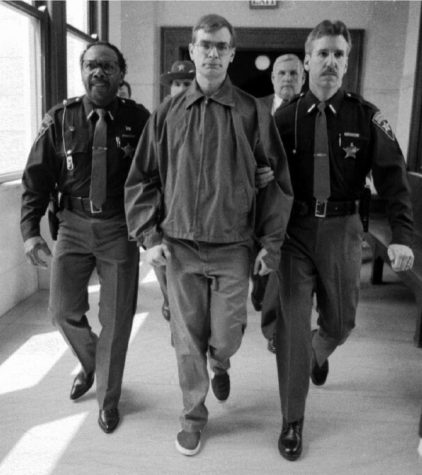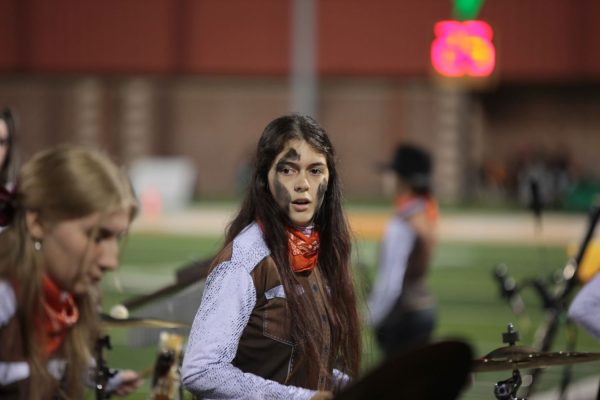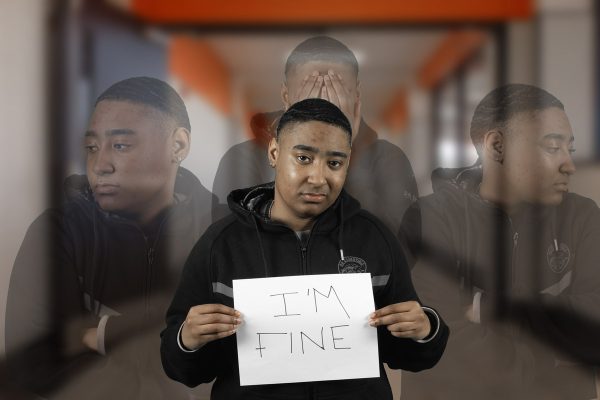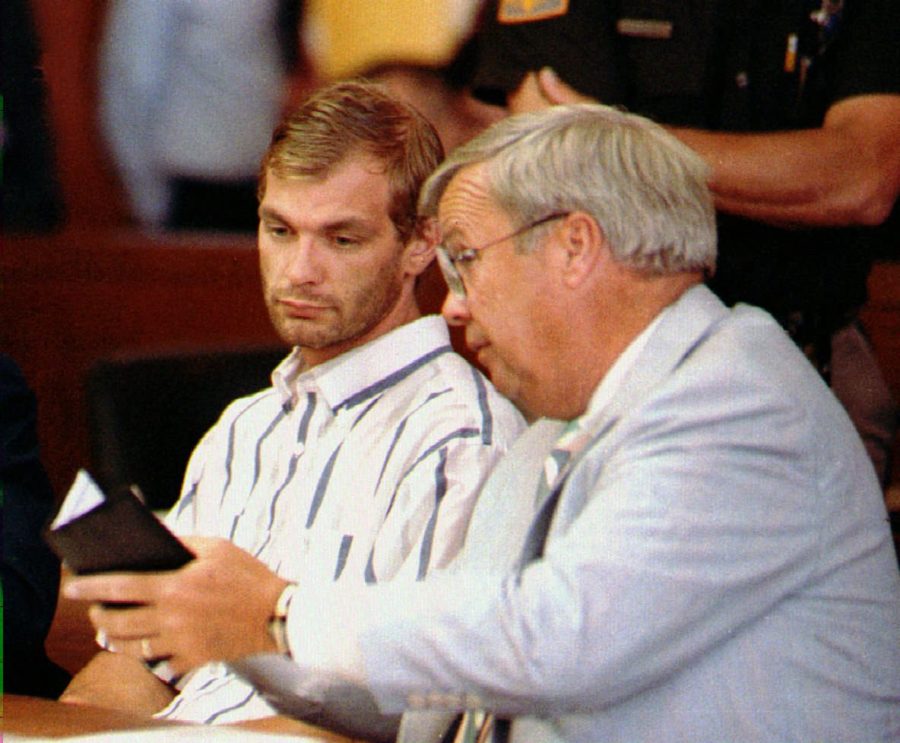Society’s contribution to a serial killer’s freedom
How did Jeffrey Dahmer escape punishment for his crimes for 13 years?
Jeffrey Dahmer sits on trial for countless murders. Dahmer somehow managed to escape suspicion for years before finally getting caught.
Jeffrey Dahmer’s reign of terror spaned over a decade, 1978-1991. Murdering 17 men and boys ages 14 to 28, mostly from gay and black communities.
In the eyes of the citizens and police force of Milwaukee, Dahmer didn’t murder, rape, then eat the “perfect victims”. From under-policed neighborhoods to unethical raids, how much did society let Dahmer get away with?
After being expelled from Ohio State University due to his grades, Dahmer enlisted in the army. After serving for 3 years, he was honorably discharged for his alcoholism. However, his more disturbing actions went unpunished.
While working in a medic unit with Dahmer, a black man named Anthony Davis called Dahmer a “racist individual” who bragged about his prior murder of Steven Knicks.
Davis also claimed that Dahmer sexually assaulted him while the two were in training together.
“Somewhere in that time frame, I was sexually assaulted. I believe that I was drugged because I lost time and have memory gaps,” Davis said. “I had very little recollection of the event.”
Another victim, Capshaw, reported that he was raped by Dahmer “eight to ten times”. Capshaw took a rape test, but the results were dismissed and Dahmer continued assaulting him for another 17 months.
If the military took these claims seriously, Dahmer could’ve been rightfully charged, and served a sentence for his crimes. Instead, the claims were pushed aside because society doesn’t take male sexual assault seriously. It is common for male victims to doubt their experiences and not ask for help because of toxic masculinity and sexist stereotypes.
The gay community in Milwaukee was an easy target for Dahmer.
“You essentially have a community that grew up being told that they really had no right to exist. You had a community who really only knew each other out of a sense of shame, out of a sense of disenfranchisement, out of a sense of being cast away,” said Michail Takach, curator of the Wisconsin LGBTQ History Project.
Takach describes it as an underground community where people hide their identities using nicknames and meeting in the dark.
“You would see somebody, and they would be around all the time and then they would just be gone, and you would really not think about it or not really question where they had gone,” Takach said.
Dahmer began preying on his victims in 1987, at the peak of the AIDS epidemic. According to the CDC, more than half a million people were living with HIV. Scott Gunkle was a bartender at Club 219, who knew Dahmer due to his perennial appearances at the social hub. Gunkle remembers the frequent loss and fear familiar to the gay community during the AIDS epidemic.

“One year I went to 19 funerals, and it was just devastating. Every other week you’d find somebody that passed away. I would talk to other people who knew certain people and say, ‘Where’s so-and-so,’ and they’d be like, ‘Oh, he passed away,’ or, ‘Oh, he’s sick and he’s in a hospice,’” Gunkle said.
In the 1960s and 70s, the police led a harassment campaign against the Milwaukee LGBTQ community. In May 1978, the Milwaukee vice squad raided the Broadway Health Club, a bathhouse and cruising spot that the LGBTQ community attended and violently arrested 18 people. The raids continued when the city’s vice squad raided two more health clubs in July.
The relationship between the justice force and the LGBTQ community enabled Dahmer’s crimes because gay men weren’t the “perfect victim” in Milwaukee, and their common disappearances weren’t seen as suspicious.
In May of 1998, Dahmer led Konerak Sinthasomphone, a 14-year-old Laotian boy, to his apartment on the pretense of money. Sinthasomphone’s older brother, Somsack, reported Dahmer for drugging and molesting him a few years prior.
Sinthasomphone left Dahmer’s apartment naked, drugged and bleeding from the hole that was drilled into his skull and filled with acid after Dahmer left. Glenda Cleveland, Dahmer’s neighbor, found the boy and called the cops, insisting that Dahmer must be investigated. When Dahmer appeared on the scene, he claimed that Sinthasomphone was his boyfriend. Cleveland’s family told police the boy looked unwell and underage, but police took Dahmer’s word and even helped lead the young boy back to Dahmer’s apartment, just to be murdered soon after.
The ignorance of the police not only lead to the death of Sinthasomphone, but Dahmer’s freedom allowed him to go on and murder Matthew Turner, Jeremiah Weinberger, Oliver Lacy and Joseph Bradehoft. If the police had even thought of a background check, they would’ve known that Dahmer was a sex offender on parole, who had just been released from jail for molesting a 13-year-old boy, Keison Sinthasomphone.
During Dahmer’s murder spree, 1987-1991, he killed 15 Indigenous, Asian, Black and Latino men and boys. African American men made up 11 of those murders, and most of Dahmer’s crimes were committed in Milwaukee’s predominantly Black Northside neighborhoods.
During the 1960s, the relationship between the police and the black community was horrible. The Northside had four-and-a-half as many police stations as its neighboring—predominantly white—community. This separation and distrust between black citizens and police caused many crimes to go unreported and led Dahmer to go unpunished for way too long.Dahmer’s legacy lives on in 2022, and many people are still responding to this situation with ignorance and no compassion. Like Ted Bundy, Dahmer is being romanticized by people on TikTok and other social media platforms; calling him attractive and making videos romanticizing the relationship between Dahmer and his victims. With the series, “Monster: The Jeffrey Dahmer Story,” releasing so close to Halloween, multiple people were seen dressing their kids up as Dahmer, not realizing how they’re dehumanizing his victims. There’s a reason it’s frowned upon to wear an Osama bin Laden costume, but it’s okay to dress as the Joker. Both are villains; however, one hurt real people.

Ashley Davis is going into her second year of newspaper as News and Feature Editor. She spends her time in activities such as National Honors Society,...












